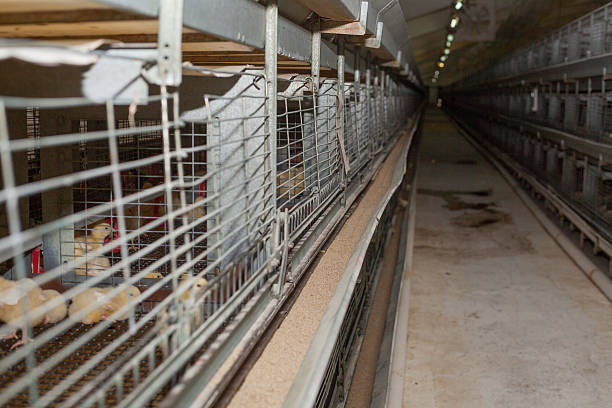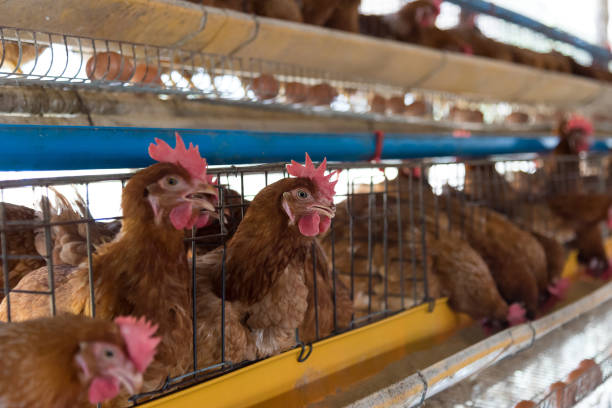Maximize Efficiency: The Benefits of Automatic Chicken Cage Systems for Your African Poultry Farm
Maximize Efficiency: The Benefits of Automatic Chicken Cage Systems for Your African Poultry Farm
Poultry farming in Africa is a vibrant and growing sector, playing a crucial role in food security, income generation, and rural livelihoods. However, traditional farming methods can be labor-intensive and inefficient, hindering the potential for growth and profitability. Automatic chicken cage systems offer a cutting-edge solution to these challenges, promising to revolutionize poultry farming across the continent. They maximize efficiency, reduce labor costs, improve bird health, and ultimately boost production. This article explores the myriad benefits of adopting automatic chicken cage systems for your African poultry farm, providing a comprehensive overview of how these systems can transform your operations and ensure a sustainable and profitable future.
**What are Automatic Chicken Cage Systems?**
Automatic chicken cage systems are exactly what they sound like: automated enclosures designed to house chickens in a controlled and efficient environment. Unlike traditional free-range or deep-litter systems, birds are housed in cages, typically made of galvanized steel wire mesh. These cages are arranged in tiers, maximizing the use of vertical space within the poultry house. The real game-changer, however, is the automation. These systems incorporate automated processes for:
* **Feeding:** Dispensing precise amounts of feed at regular intervals.
* **Watering:** Providing a constant and clean water supply to each cage.
* **Manure Removal:** Automatically cleaning the cages, improving hygiene and reducing disease risk.
* **Egg Collection (for layer systems):** Gathering eggs gently and efficiently, minimizing breakage.
* **Climate Control:** Ventilation and temperature regulation to maintain optimal conditions.
**The Key Benefits of Automatic Chicken Cage Systems for African Poultry Farms**
The advantages of switching to automatic chicken cage systems are numerous, offering a compelling case for modernization for African poultry farmers.
**1. Increased Efficiency and Production**
Automation is the cornerstone of increased efficiency. Automatic feeding ensures that each bird receives the right amount of feed at the right time, promoting optimal growth and egg production. Uniform feeding leads to more consistent weight gain in broilers and a higher, more predictable egg yield in layers. Reduced feed waste is another huge benefit. Traditional methods often result in spilled feed, attracting pests and rodents. Automatic systems minimize waste, saving you money and improving hygiene.
Automatic egg collection significantly reduces egg breakage and contamination, leading to higher quality eggs and increased marketability. This is especially important in Africa, where access to reliable cold storage and transportation can be limited. Clean, unbroken eggs are more likely to reach consumers in good condition, fetching a better price.
**2. Reduced Labor Costs**
Labor costs can be a significant burden for African poultry farmers. Automatic systems drastically reduce the need for manual labor, freeing up your workforce for other essential tasks. Tasks like feeding, watering, and manure removal, which traditionally require significant manpower, are now handled automatically. This allows you to allocate your labor resources more strategically, focusing on farm management, marketing, and other value-added activities.
The reduced reliance on labor also shields you from the challenges of finding and retaining reliable workers, which can be a persistent problem in many rural areas. By automating key processes, you can streamline your operations and become less dependent on external labor.
**3. Improved Bird Health and Welfare**
While the use of cages can sometimes raise concerns about animal welfare, modern automatic chicken cage systems prioritize bird health and well-being. Proper ventilation is essential for maintaining air quality and reducing the risk of respiratory diseases. Automatic systems incorporate ventilation fans and climate control features that create a comfortable and healthy environment for the birds, even in hot and humid climates.
Automated manure removal is another key factor in improving bird health. By keeping the cages clean, you reduce the build-up of ammonia and other harmful gases, minimizing the risk of disease outbreaks. A clean environment also reduces the incidence of footpad dermatitis and other common poultry ailments.
While space is a common concern, modern cage systems are designed to provide adequate space for birds to move and exhibit natural behaviors. It’s crucial to choose a system that meets or exceeds recommended space requirements for your specific breed of chicken.
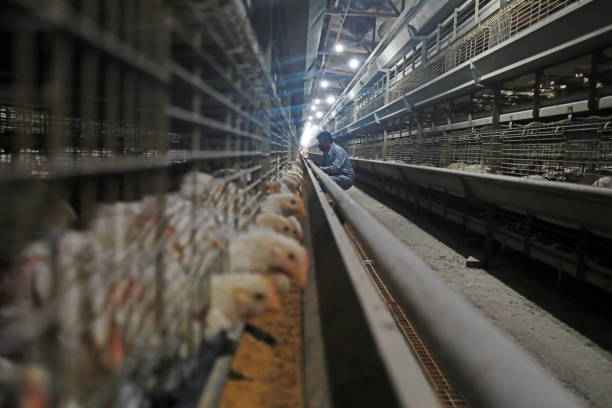
**4. Enhanced Biosecurity**
Biosecurity is paramount in poultry farming, and automatic cage systems offer enhanced protection against disease transmission. The enclosed nature of the cages limits contact between birds and external sources of contamination, such as wild birds, rodents, and other animals. Controlled access to the poultry house further reduces the risk of introducing pathogens.
Automatic manure removal reduces the attraction of flies and other disease vectors, minimizing the spread of disease within the farm. The ability to easily clean and disinfect the cages also contributes to a more hygienic environment, reducing the risk of disease outbreaks.
**5. Better Manure Management**
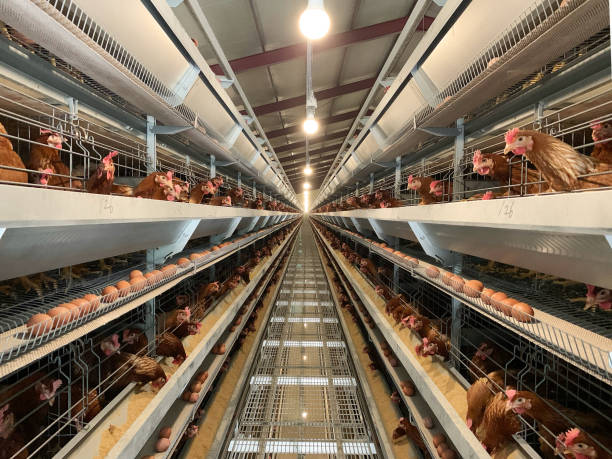
Manure management is a crucial aspect of responsible poultry farming. Automatic systems facilitate efficient manure collection and disposal, minimizing environmental impact and maximizing the value of manure as a fertilizer. Automatic scrapers or conveyor belts remove manure from the cages, depositing it in a collection area. This allows for easy composting or processing into valuable fertilizer.
Proper manure management reduces the risk of water and soil contamination, protecting the environment and promoting sustainable farming practices. By turning manure into a valuable resource, you can reduce your reliance on chemical fertilizers and create a more circular and sustainable farming system.
**6. Space Optimization**
Automatic chicken cage systems maximize the use of vertical space, allowing you to house more birds in a smaller area compared to traditional farming methods. This is particularly beneficial for farmers with limited land availability. By utilizing tiered cages, you can significantly increase your production capacity without expanding your farm footprint.
Optimizing space also reduces the infrastructure costs associated with building and maintaining poultry houses. Smaller houses require less construction materials and less energy for heating and cooling, saving you money in the long run.
**7. Improved Monitoring and Control**
Many modern automatic cage systems come equipped with sensors and monitoring systems that provide real-time data on key environmental parameters, such as temperature, humidity, and ammonia levels. This data allows you to proactively manage your poultry house environment and make adjustments as needed to optimize bird health and performance.
Remote monitoring capabilities allow you to track your farm’s performance from anywhere, using your smartphone or computer. This enables you to respond quickly to any issues that may arise, minimizing potential losses.
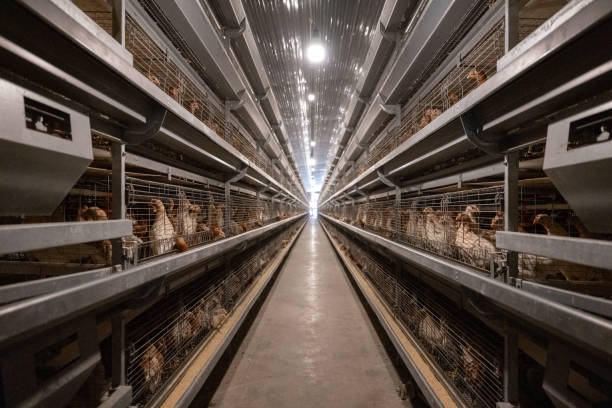
**Choosing the Right Automatic Chicken Cage System**
Selecting the right automatic chicken cage system is a critical decision that will impact your farm’s profitability for years to come. Here are some key factors to consider:
* **Type of Bird:** Layer or broiler systems are designed specifically for egg production or meat production, respectively. Ensure you choose a system that is appropriate for your farming goals.
* **Cage Size and Capacity:** Choose a cage size that provides adequate space for your birds to move and exhibit natural behaviors. Consider the stocking density recommended for your specific breed of chicken.
* **Material Quality:** Opt for durable and corrosion-resistant materials, such as galvanized steel, to ensure the longevity of your system.
* **Automation Features:** Evaluate the level of automation offered by the system, including feeding, watering, manure removal, and egg collection (for layer systems). Choose features that best meet your needs and budget.
* **Climate Control:** Ensure that the system includes adequate ventilation and temperature control features for your specific climate.
* **Biosecurity Features:** Look for systems with features that enhance biosecurity, such as enclosed cages and controlled access.
* **Supplier Reputation:** Choose a reputable supplier with a proven track record of providing high-quality products and reliable customer support. Ensure that the supplier offers comprehensive installation and training services.
* **Cost and Financing:** Consider the total cost of the system, including installation, maintenance, and operating costs. Explore financing options to make the investment more affordable.
**Overcoming Challenges to Adoption in Africa**
While the benefits of automatic chicken cage systems are clear, there are also challenges to their adoption in Africa that need to be addressed.
* **Initial Investment Costs:** The initial investment cost of automatic systems can be a barrier for many farmers, especially small-scale producers. Exploring financing options, such as government subsidies, microloans, and partnerships with agricultural companies, can help to overcome this challenge.
* **Technical Expertise:** Operating and maintaining automatic systems requires a certain level of technical expertise. Providing training programs for farmers and technicians can help to ensure the successful adoption and operation of these systems.
* **Infrastructure Limitations:** In some rural areas, infrastructure limitations, such as unreliable electricity supply and limited access to spare parts, can pose challenges. Choosing systems that are energy-efficient and easy to maintain can help to mitigate these challenges. Investing in alternative energy sources, such as solar power, can also improve the reliability of electricity supply.
* **Perceptions about Animal Welfare:** Addressing concerns about animal welfare is crucial for promoting the adoption of automatic cage systems. Educating farmers and consumers about the benefits of modern cage systems, particularly in terms of bird health and biosecurity, can help to dispel misconceptions and promote acceptance.
**The Future of Poultry Farming in Africa**
Automatic chicken cage systems represent a significant advancement in poultry farming technology, offering a pathway to increased efficiency, profitability, and sustainability for African farmers. By embracing these innovative solutions, African poultry farmers can unlock their full potential, contributing to food security, economic growth, and improved livelihoods across the continent. As technology continues to evolve and costs decrease, automatic cage systems will become increasingly accessible, transforming the landscape of poultry farming in Africa and ensuring a brighter future for the industry. Investing in education, training, and infrastructure will be crucial for maximizing the benefits of this transformative technology and ensuring that African poultry farmers can compete effectively in the global marketplace.




